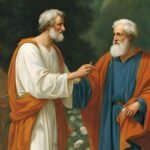Astrophysics - Neil DeGrasse Tyson
What is Astrophysics?
Astrophysics is the branch of astronomy that deals with the physical and chemical processes that occur in stars, galaxies, and interstellar space.
It studies the structure and evolution of stars, the properties of interstellar space and its interactions with systems of stars, and with the structure and dynamics of clusters of stars such as galaxies.
Here we look at some of the books written by an American Astrophysicist and educator Neil deGrasse Tyson.
Tyson earned his bachelor’s degree in physics, master’s degree in astronomy and PhD in astrophysics. He held various positions at University of Maryland and Princeton University. Since 1996, he has been the Director of the Hayden Planetarium (The Hayden Sphere or The Great Sphere) at the American Museum of Natural History, New York.
The original Hayden Planetarium was opened to public in 1935 and closed down for re-construction in 1997. The new planetarium was opened in 2000.
Neil deGrasse Tyson is the author of several books, including Merlin’s Tour of the Universe (1998), Just Visiting This Plant (1998), Space Chronicles: Facing the Ultimate Frontier (2012).
He has co-authored Welcome to the Universe: An Astrophysical Tour (2016) with Michael A. Strauss and J. Richard Gott who are professors of astrophysics at Princeton University.
Astrophysics for People in a Hurry
Neil deGrasse Tyson takes mind-boggling complex ideas and reduces them to simple explanations. The book covers some of the complex scientific concepts. It is written in a style that is sarcastic, hilarious, and uses colorful allegories.
Tyson takes some of the scientific facts and explains them in an easy to remember way.
On water: It is made up of hydrogen (explosive gas) and oxygen (supports combustion) and the two combined make liquid water (extinguishes fire).
Tyson guides through the questions on big bang to black holes, quarks to quantum mechanics in bite size chapters with a sense of humor.
It is not about seeing, it’s about measuring things that your eyes cannot see.
There are more stars than grains of sand on earth.
The universe had a beginning, it continues to evolve and every atom in our body is traceable to the BIG BANG! We are Stardust – remnants of the thermonuclear explosion that occurred more than five billion years ago.
No way to avoid a Physics Class: physical laws apply everywhere, whether or not you choose to believe in them.
Do we really know our universe?
The universe continually gives birth to new universes
The universe popped into existence from nothing – hmmm…the immense power of NOTHING!
Computer simulation by an intelligent species
The universe doesn’t have to explain itself to you
How smart are we?
As smart as we know
What or who is Stardust?
We are STARDUST!
Besides exploring the cosmos, Tyson wittingly brings nuggets of some of the basic principles of science.
Periodic Table – a zoo of one-of-a-kind animals conceived by Dr. Seuss
The most economical shape to store cheerios is not in a box but in a spherical carton. However, chasing the spherical carton of Cheerios in aisles would make it impractical.
Welcome to the Universe – An Asrtophysical Tour
The Book provides a comprehensive overview of our universe by three eminent astrophysicists, Neil deGrasse Tyson, Michael A. Strauss & J Richard Gott. It is based on an introductory course they taught at Princeton University.
The book describes the latest discoveries in astrophysics in an informative and entertaining narrative that propels you from our solar system to the outermost frontiers of space.
Some aspects discussed in the book:
The universe is 14 billion years old and by 22 billion years the sun will become a white dwarf.
The nearby stars that appear at present were there 4 years ago, not today.
What is the composition of the universe?
The is 90% hydrogen, 8% helium and 2% rest of the elements.
Ever wondered why dark matter is dark?
Dark matter does not interact with photons.
Dark matter particles pass through your body all the time…
The brightest star is the Dog Star.
Black hole and white hole
If a particle can fall into a black hole, it can come out of a white hole.
Hard to make a time machine out of normal material in your garage by only gently curving spacetime
Expanding Universe?
Rising (expanding) like a loaf of Raisin Bread!
Nothing is constant or absolute
Embrace the inconstancy of knowledge.
Decade by decade: estimates of Pluto’s size got smaller and smaller.
Finally…. Pluto lost its planetary status and was demoted to an ice ball in the outer solar system.
Death by Black Hole: other Cosmic Quandries
Tyson wrote monthly essays in Natural History magazine under the heading, “Universe”. The book has more than forty essays that explore a range of cosmic topics.
Tyson has a talent for guiding public through the mysteries of the cosmos with clarity and enthusiasm.
Death by Black Hole is divided into seven sections: The Nature of Knowledge, The Knowledge of Nature, Ways and Means of Nature, The Meaning of Life, When the Universe Turns Bad, Science and Culture, and Science and God.
The Nature of Knowledge discusses the importance of augmenting our five basic senses (sight, hearing, taste, smell, touch) to expand our observation and understanding of the universe. For example, night vision goggles convert the near-infrared spectrum into the visible spectrum, making it easier for biologists to observe nocturnal animal behavior.
The Knowledge of Nature looks at basic astronomical facts, such as, the planets, the asteroids, the points where gravity holds an object in orbit.
Ways and Means of Nature discusses natural constants such as the speed of light and the color of objects in the universe. Many published astronomical photographs show colors that correspond not to what an observer in space might see, but to phenomena the astronomer wishes to display graphically, such as the relative temperature of the objects portrayed.
The Meaning of Life addresses various conditions that seem to be necessary for life to evolve in a planetary system.
When the Universe Turns Bad discusses cosmic disasters, notably the earth being incinerated as the sun becomes (in several billion years) a red giant.
Science and Culture looks at the sometimes-uncomprehending reaction of the public to theories and discoveries. In Tyson’s opinion, a wider knowledge of simple math might solve many of the most bizarre responses.
Science and God touches on those areas where science and religion appear to compete for the same turf: notably, the origin of the universe, and whether it betrays evidence of design.
Origins: Fourteen Billion Years of Cosmic Evolution
Our true origins are not just human, or even terrestrial, but in fact cosmic.
Scientific breakthroughs in geology, biology, astrophysics, and cosmology etc. has expanded our understanding of the cosmos significantly.
From the exploration of Mars to the discovery of water on one of Jupiter’s moons, coauthors Neil deGrasse Tyson and Donald Goldsmith conduct a galvanizing tour of the cosmos with clarity and exuberance.
We live on a speck of dust.
Some excerpts from the book:
we live on a cosmic speck of dust, orbiting a mediocre star in the suburbs of a of a nondescript galaxy, among a hundred billion galaxies in the universe.
at the beginning of time, all the space and all the matter and all the energy of the known universe fit within a pinhead. It was about 14 billion years ago,
Throughout history, different cultures have produced creation myths that explain our origins as the result of cosmic forces shaping our destiny. These histories have helped us to ward off feelings of insignificance.
Undistinguished planet Earth, we thrive on.
Some excerpts from the book:
After 7 or 8 billion years of such enrichment, an undistinguished star (the Sun) was born in an undistinguished region (the Orion arm) of an undistinguished galaxy (the Milky Way) in an undistinguished part of the universe (the outskirts of the Virgo supercluster). The gas cloud from which the Sun formed contained a sufficient supply of heavy elements to spawn a few planets, thousands of asteroids, and billions of comets.
Astrobiologists now believe that the existence of life throughout the universe requires: 1. a source of energy; 2. a type of atom that allows complex structures to exist; 3. a liquid solvent in which molecules can float and interact; and 4. sufficient time for life to arise and to evolve.
It took the mind of Albert Einstein, the twentieth century’s most brilliant and influential, to show that we can more accurately describe gravity’s action-at-a-distance as a warp in the fabric of space-time, produced by any combination of matter and energy.









